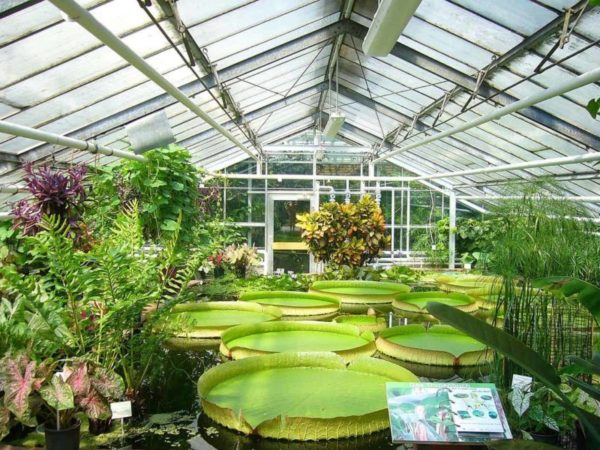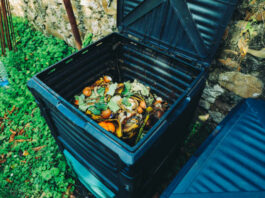A greenhouse must always be kept warm and well-maintained for the plants and vegetation to grow. However, contrary to popular beliefs, you have many more accessible and more affordable means of keeping it warm all the time.
Let us now discuss the cheapest way to heat a greenhouse in winter.
How To Heat a Greenhouse Without Electricity?
The astronomical monies involved with some of the traditional greenhouse heating methods have led researchers to relentlessly pursue pocket-friendly alternatives, especially with farmers eagerly awaiting the invention of the cheapest way to heat a greenhouse.
We have also been on a similar mission here at growtheherbs.com. However, we choose to go a step further- and also find out how to keep greenhouse warm in winter for free.
The good news is that we have already come across some functional money-saving options.
Paraffin heaters, compost, Bubble wrap, DIY systems, and thermal mass are just some of the practical and cheaper greenhouse heating methods.
Here are our insights into how to heat a greenhouse in winter for free (or almost free).
- Compost For Warmth – Heating A Greenhouse with Compost. Compost is one crucial input for gardeners for heating in greenhouses. Beyond nourishing your plantation with essential nutrients, compost has another significant advantage: heat.
This is what happens:
As it chemically dissolves, compost releases energy as heat. This can even rise above 1000F. Your plants can benefit a lot from manure during the winter. The sweetest news is that heating a greenhouse with compost is almost 100% free- if you know how to prepare it. And in case you are unsure of how to use compost to create a powerful water heater, here is an excellent guide.
- Brown, Gaelan (Author)
- English (Publication Language)
- 170 Pages - 05/05/2014 (Publication Date) - Countryman Press (Publisher)
Editor’s Note:
Follow this manual 100% …you should soon be enjoying free heating!
What Is The Cheapest Way To Heat a Greenhouse In Winter For Free?
Here are some of the cheapest ways to heat a greenhouse in winter:
- Store Solar-based Energy In A Thermal Mass – Another cheap and common way to heat a greenhouse is to utilize thermal mass (sometimes called a heat sink). A thermal mass is simply any material that can store thermal energy until the temperatures decline, when it will start releasing the stored heat into your greenhouse.
When selecting, choose the suitable material – that’s because some hold heat better than others.
For instance, water holds roughly two times the heat that concrete has and four times what soil holds and is most preferred.
- Using Water As A Thermal Mass – Water barrels are excellent when used as thermal mass due to their higher heat capacity. You can fill a reasonable number of 55-gallon drums with water and then stack them on each other. You will have created an energetic thermal mass. Ensure you stack the barrels where they can access direct sunlight- mostly facing south.
Also, put them near tender plants since they need more warmth when the temperature drops off.
Alternative Materials
If the floors of your greenhouse have been made from compressed gravel or concrete, then you already have your thermal mass.
Also, the soil in your raised seedbeds can add thermal mass.
Another thing, if you have been growing using an aquaponics system — where fish and plants grow symbiotically —the fish tanks can double as thermal mass.
- Insulation
The simplest way to protect your plants from cold is by insulating.
Depending on your budget and what you’re cultivating, you can insulate with either:
- A regular bubble wrap
- A Horticultural bubble wrap
- A horticultural fleece
- A Regular Bubble Wrap
Covering your greenhouse with a layer of insulating bubble wrap helps. A bubble wrap functions as an added shield against frost besides restraining the heat inside.
For wooden greenhouses, you can use push pins to fasten the wrap against the wall. If your housing is metallic, use special fasteners to twist the frame.
In case your glazing is glass, moisten suction cups and press them against it –they should work. Once you wrap up all the walls plus the roofing, don’t forget to seal any wrap joints with scotch tape- this avoids potential heat loss.
Remember, you’ll need to ventilate your greenhouse.
So be sure to line the vents separately (or at least one) to allow them/it to open.
This trick works wonders for both heated and unheated greenhouses.
- A Horticultural Bubble Wrap
You can also choose to take the horticultural bubble wrap route- these types of wrappers are considered tougher, longer-lasting, and are UV-stabilized.
And they give better results.
Here is a review of the most recommended horticultural bubble wraps to give you a better idea of how these work.
Pros
- Conforms easily around awkward corners
- Hold heat longer; hence protect your herbs better
- Easy to install
Cons
- Smaller size bubbles
Editor’s Note:
Finally, carefully take down the bubble and store it when the cold is gone- next winter, it will find you fully armed.
Pros
- Easy to cut and wrap
- Made of Non-toxic (Fiber free)
- Very durable
Cons
- Doesn’t come with staple tabs
- A Horticultural Fleece – Moving away from the bubble wrap and the horticultural fleece, another handy option is by covering your suffering plants using a horticultural fleece.
This is particularly recommended as additional insulation during those nights when it’s extra-cold
As usual with covers, remember to remove your fleece during the daytime to afford your veggies a chance to breathe and receive essential light.
- Use an Economical Renewable Energy Powered Heater – Harnessing the sun and storing solar energy is your first step towards free heating.
But if you need additional heating, the underrated rocket mass heater could offer a fantastic solution.
If you ask those who have used it, they will tell you that this is a super-efficient improvisation from an ordinary wood stove.
This is what it does:
Rather than hot exhaust air straight through the chimney-like standard wood stoves do, this customized wood stove will first circulate the hot air past a mass of brick, cob, or even stone before being exhausted out.
The air will warm the mass and hold the heat before radiating it back into your greenhouse.
It will continue warming even if your stove is no longer burning.
A rocket mass heater is mainly a DIY system; you will need to investigate the appropriate design for your greenhouse from the many plans and explanations available online.
One can also consider cheap grow light bulbs for indoor plants.
Looking at the options, we can say that the search for the cheapest way to heat a greenhouse has been quite successful.
But rather than stick to one method, it’s recommended that you experiment and see what works for you. The good thing is that even if not all are 100% free- some of you had asked how to keep greenhouse warm in winter for free – the little investment in terms of labor, time, and materials pays back big in the long run.
Otherwise, this is clear evidence that you don’t have to burn a hole in your pocket to grow food in a greenhouse.
- Heating Your Greenhouse Using Paraffin – A paraffin heater can supply the warmth your plants are desperate for during winter.
Provided your greenhouse doesn’t extend more than 8ft in length, you will find paraffin-powered energy convenient.
Also, mind the following:
- Heating demand should not be too high(maximum of +5c )
- Outside temperature should not go below -6c
Your paraffin heater greenhouse will readily save your herbs from the biting cold under these conditions.
Where To Buy Paraffin Greenhouse Heaters?
You can buy a good paraffin heater from the teeming online stores, local garden stores, and in some cases, from manufacturers’ direct
Paraffin Greenhouse Heaters Reviews
Here is the top paraffin greenhouse heater from Amazon.
Pros
- Works well
- Highly portable
- Straightforward application
Cons
- Not for bigger spaces
Wrapping Up
This is all you need to know about the different greenhouse heating processes during the winter without shedding much money on the same. Hope you found great insight into this. All the best with your search!
Last update on 2023-04-18 / Affiliate links / Images from Amazon Product Advertising API








